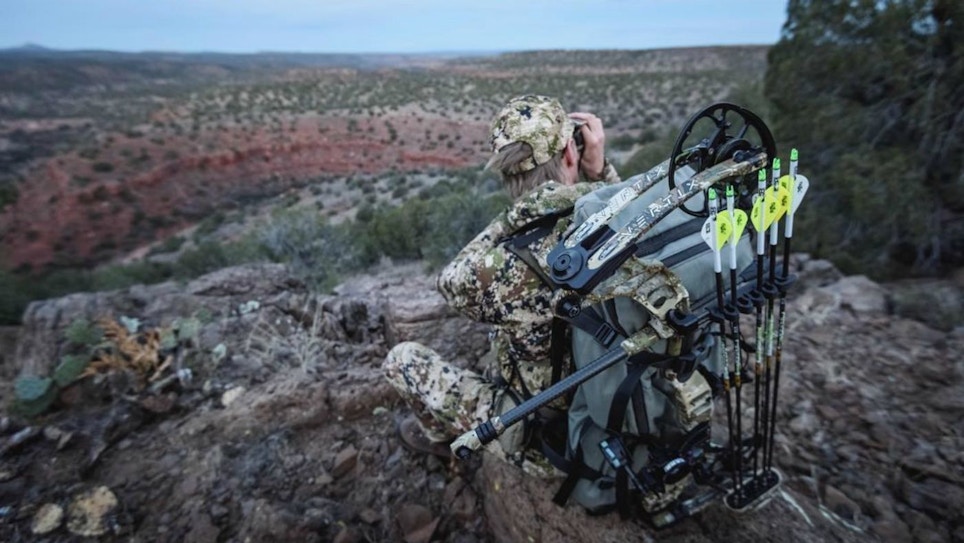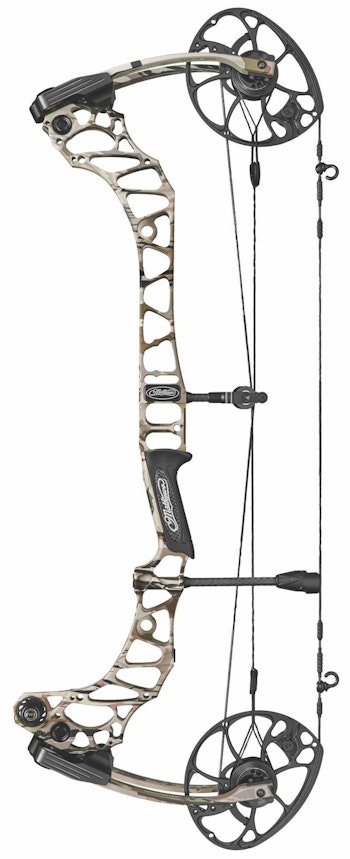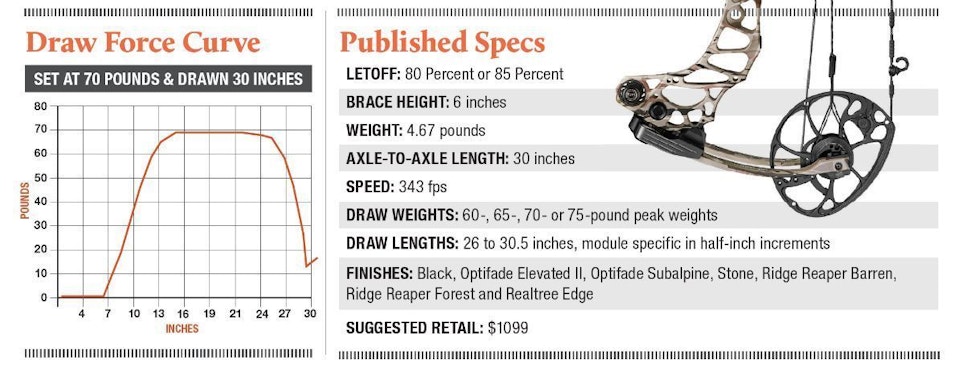Was last year’s Triax Mathews’ best bow ever? A lot of folks seemed to think so. It was (and is, since it’s still on the menu), respectably fast at a nominal 343 fps, with a very smooth draw cycle. Mathews’ billed it as “insanely quiet.” I don’t know about the “insane” part, but it is a remarkably quiet bow. With an axle-to-axle length of 28 inches, there is no question but that it’s a very compact bow. And while increasing compactness has been a trend in recent years, short bows have their disadvantages, especially for shooters with long draw lengths.
Enter the Vertix. One could describe the Vertix as a longer axle-to-axle Triax, and one would not be mistaken. That is essentially what it is. Yes, there have been a few tweaks, and a couple of real changes, and we’ll discuss those. First, though, we’ll look at the design features and qualities these bows share — features that are keeping alive a reputation for cutting-edge innovation that goes all the way back to Mathews’ popularization of the single-cam bow.
Arguably the most important of these is the Crosscentric Cam system, a system employing a partially concentric string payout offering a notably smooth draw cycle while at the same time leveling nock travel. Mathews’ AVS technology slaves the cams together to virtually eliminate timing issues. RockMods, offering an option of 75 percent or 85 percent let-off, are also part of this system. Among the other qualities of these cams is their size. In a word, they are large. And as pointed out in my report on the Halon and the Triax, this is an important aspect of the overall design because it reduces the string angle at full draw, in effect making a short axle-to-axle bow a little longer. SwitchWeight technology, new on the Vetix, represents a significant change to the system. It not only allows shooters to change draw length by changing modules, but also allows changing draw weight in 5-pound increments without changing limbs. Modules are available in 60-, 65-, 70- and 75-pound peak weights, and offer 80 or 85 percent let-off.
In common with its predecessors, the Vertix boasts True Center nocking point and Mathews’ Reverse Assist Roller Guides, as well as the same string stop and the Monkey Tails. The wide set quad limbs and subsequently wide limb pockets for enhanced stability remain unchanged. What Mathews labels the 3-D damping system, characterized in part by a lower part of the riser extending beyond the limb pocket with a Harmonic Stabilizer, is another design element retained from the Triax.
Though at a glance the risers of the Vertix and the Triax appear to be identical (apart from length), a closer inspection reveals a few of the tweaks I referenced earlier. Because of the increased length, there are more cutouts in the riser of the Vertix. The forward sweep of the riser at either end is a little less abrupt than was the case on the Triax, and cutouts at either end are subsequently more elongated. Holes in the riser at either end are reduced in number on the Vertix. The effect is not dramatic, but in addition to being a little heavier, as you might expect given the added length of the riser, the balance point of the Vertix is a little higher.
Arguably more than just a tweak, the Engage Grip of the Vertix is new to this model. It’s skinny, which more and more shooters seem to prefer. It’s angled a little more sharply, which promotes more of a high wrist grip. It’s also somewhat tacky to the touch. If you prefer that, you’ll like this grip. If you prefer a slick grip because you think (as do I) that a slick grip tends to more naturally and consistently slide into the same correct spot on the hand, you might not like it. In any case, it is a comfortable, warm-to-the-touch grip. Also new on the Vertix is a dovetail mounting system designed to accommodate QAD’s new UltraRest Integrate MX.
Fit and finish, as you’d expect from a premium bow, was flawless on the test bow. I liked the old walnut grips once featured on Mathews’ bows in terms of appearance, but suspect the newer grips are more functional, if not so pretty.
Shooting the Bow
Setup was routine, though the limb bolts chattered at the higher end of the draw weight. Anyone who has been shooting a bow for ten years or more is likely to feel that most of today’s bows are easy to tune. The Vertix, like the Triax and the Halon before it, are exceptionally easy to tune. It is hard to imagine a smoother draw cycle for a bow of any speed. For a bow with the very respectable speed of the Vertix, that silky draw cycle is truly remarkable — as are the lack of recoil, vibration, and noise. Shooters who have a real preference for compact bows might prefer the Triax, which measurably (if not perceptibly) produces only slightly more noise and vibration. For shooters with longer draw lengths, or who like the added forgiveness and shootability of a longer axle-to-axle bow, the Vertix might well be Mathews’ best bow ever. The combination of high speed and high shootability is unsurpassed, and some might say unmatched.
For more information, visit www.mathewsinc.com.
How We Test
- Each bow is carefully inspected out of the box for fit and finish and for any visible defects in workmanship. Axle-to-axle length, brace height, mass weight and draw length are measured and compared with stated specs. Minor discrepancies in draw length are corrected or noted. A QAD UltraRest is installed, and each bow is equipped with a TruGlo sight, a TruGlo stabilizer, a G5.25-inch Metapeep and a D-loop. Test arrows are Carbon Express Maxima Red arrows at weights of 385 and 440 grains, fletched with Bohning Blazer vanes and fitted with QAD Tune-A-Nocks. Peak draw weight is established, and draw force curves, along with letoff, are determined using an Easton Bow Force Mapping System.
- Using a Spot-Hogg Hooter Shooter bow-shooting machine and a ProChrono chronograph, arrow speed and kinetic energy are measured at point of launch and at 20 yards.
- Sound is measured with an NM102 Sound Level Meter with mic positioned 3 feet in front of the bow and 18 inches under the arrow flight path.
- All bows are pressed on a Buckeye Archery Solutions Bow-A-Constrictor press.









